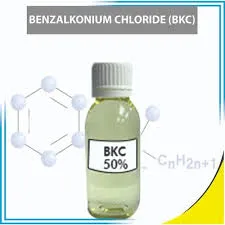Understanding the Properties and Applications of HEDP Acid in Industrial Uses
Understanding HEDP Acid Properties, Applications, and Safety Considerations
HEDP, or Hydroxyethylidene Diphosphonic Acid, is a versatile and widely used chemical compound in various industries. It is a type of phosphonic acid and has gained prominence due to its unique properties and applications, particularly in water treatment, detergent formulations, and industrial processes. This article explores the characteristics, uses, and safety considerations of HEDP acid.
Properties of HEDP Acid
HEDP has a molecular formula of C2H8O7P2 and a molar mass of 206.03 g/mol. It is a colorless, odorless liquid that is soluble in water, making it highly effective in applications requiring dissolution. HEDP possesses excellent chelating properties, meaning it can bind to metal ions, which is crucial for its function in various settings.
The compound is particularly stable under different pH conditions, making it suitable for use in both acidic and alkaline environments. Its structure allows it to effectively inhibit scale formation and corrosion, which are significant concerns in many industrial and municipal water systems.
Applications of HEDP Acid
One of the primary applications of HEDP acid is in the water treatment industry. It is commonly used as a scale and corrosion inhibitor for cooling water systems and industrial boilers. The presence of HEDP helps to protect metal surfaces from the damaging effects of mineral deposits and corrosion, which can lead to system failures and increased maintenance costs.
In the realm of detergents, HEDP enhances cleaning performance by softening water and improving the solubility of metal ions. This property makes it an essential ingredient in laundry detergents and dishwashing liquids, where it helps prevent the formation of soap scum.
hedp acid

Additionally, HEDP is employed in the oil and gas industry for its ability to inhibit scale formation in pipelines and drilling equipment. By controlling the deposition of minerals, HEDP ensures operational efficiency and prolongs the lifespan of infrastructure.
Moreover, in the field of agriculture, HEDP is utilized as a chelating agent in fertilizers. It aids in the effective delivery of essential nutrients to plants by binding with metal ions, thus enhancing nutrient uptake and promoting healthy growth.
Safety Considerations
While HEDP is generally recognized as safe for many applications, it is essential to handle it with care. The compound can cause irritation to the skin, eyes, and respiratory tract upon contact or inhalation. Therefore, appropriate personal protective equipment (PPE), such as gloves, goggles, and masks, should be used when handling HEDP.
Environmental considerations are also vital when using HEDP. Although it is biodegradable, excessive release into water bodies can lead to ecological imbalances. Proper disposal methods and adherence to local regulations are crucial to minimize environmental impact. It is also important to prevent any direct release into groundwater or surface water systems.
Regulatory agencies classify HEDP under various chemical inventories, meaning it is subject to specific handling and usage guidelines. Companies that utilize HEDP must ensure compliance with these regulations to safeguard both workers and the environment.
Conclusion
HEDP acid is a multifunctional chemical compound with significant benefits in numerous industries. Its effectiveness as a scale and corrosion inhibitor, combined with its ability to enhance cleaning performance and nutrient delivery, makes it a valuable resource in water treatment, detergents, oil and gas, and agriculture. However, understanding the safety and environmental considerations associated with HEDP is imperative for responsible usage. By adhering to appropriate handling practices and regulations, industries can harness the benefits of HEDP while minimizing potential risks to human health and the environment. Through ongoing research and development, the applications of HEDP continue to expand, leading to innovative solutions in various sectors, thus ensuring its relevance in the modern chemical landscape.
-
Water Treatment with Flocculant Water TreatmentNewsJun.12,2025
-
Polymaleic AnhydrideNewsJun.12,2025
-
Polyaspartic AcidNewsJun.12,2025
-
Enhance Industrial Processes with IsothiazolinonesNewsJun.12,2025
-
Enhance Industrial Processes with PBTCA SolutionsNewsJun.12,2025
-
Dodecyldimethylbenzylammonium Chloride SolutionsNewsJun.12,2025





